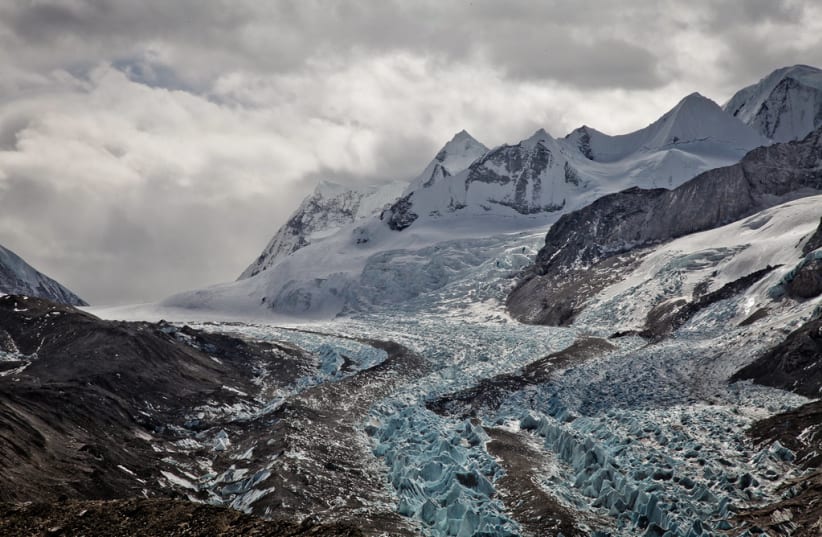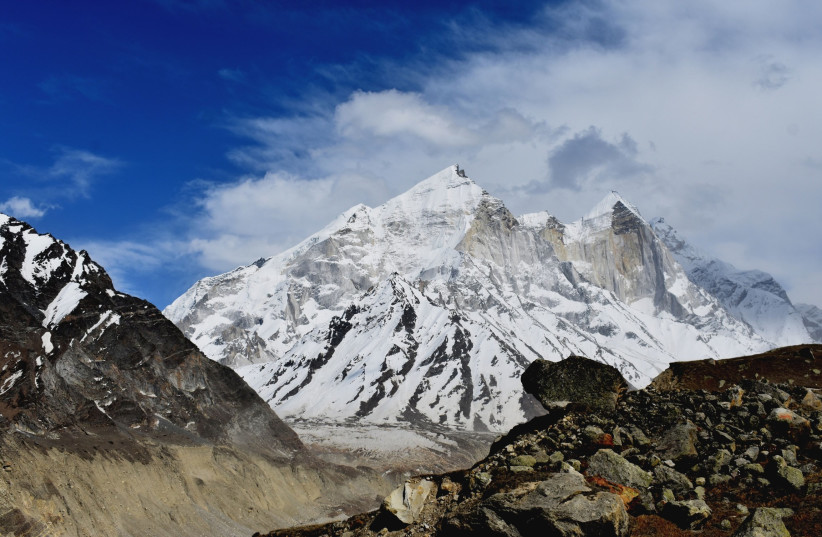The Himalayan glaciers have undergone rapid ice loss over the last four decades that far exceeds the ice loss recorded in other places across the world during the same period. Not only that, however, but the ice has melted at a significantly more accelerated rate in the past 40 years than it did during the previous seven centuries, a new study has found.
The peer-reviewed study, "Accelerated mass loss of Himalayan glaciers since the Little Ice Age," was published by the Scientific Reports journal and was led by the University of Leeds.
The aim of the study was to understand the rapidly reducing size of the Himalayan Glaciers within the context of their history since the Little Ice Age. In order to do this, they reconstructed the extent and surfaces of 14,798 glaciers during that time period, which existed 400-700 years ago between 1300-1600 CE.
The reconstructions were created by using satellite images to reveal ridges in the glaciers which marked their former boundaries. The geometry of the ridges was then used to estimate the former glacial size and ice surface elevation.
Using the reconstructions, the research team was able to conclude that the glaciers have lost at least 40% of the ice that they had during the Little Ice Age - between 390 and 586 cubic kilometers. This has resulted in them shrinking from a peak area of 28,000 square kilometers to around 19,600 km² today. Sea levels worldwide have been raised by 0.92 mm and 1.38 mm as a result of the water released by the melting glaciers, according to the scientific team's calculations.
The Himalayan Glaciers contain the third-largest deposit of snow and ice in the world, exceeded only by the Arctic and Antarctica. The Himalayan range encompasses just under 15,000 glaciers including key peaks in the Mount Everest region.
The sheer amount of surface area covered by the glaciers meant that the scientific team had to take differing environments into account throughout the study, splitting the glaciers into four groups as a result, based on whether or not they were on land or water, and whether they were covered in natural debris.
Debris or no debris, that is the question
The four groups were categorized as follows: Debris-lake (encompassing 1% of all glaciers), debris-land (7%), clean-lake (4%), and clean-land (88%).
Research into the differing environments of each glacier showed that although clean-lake glaciers only account for 4% of all Himalayan glaciers, they contributed a disproportionately large amount to the total volume loss, having reduced in ice-mass by around 14% since the Little Ice Age.
Furthermore, the combined median rate of mass loss of all lake glaciers was around two and a half times greater than that of land glaciers. The lake glaciers situated in the south had lost 40.6 km³ of ice, and those in the north had lost 69.4 km³, meaning a 13% and 40% loss of the total ice mass on each side respectively.
But it is not just the glacier's environment – whether it is on land or in water – that makes a difference. The examination of clean glaciers vs debris-covered glaciers also proved that the presence of debris makes a crucial difference to mass loss, regardless of whether the glacier is in a lake or on land.
Debris-covered glaciers in the south contributed 46.5% of total mass loss, despite making up only 7.5% of all Himalayan glaciers, meaning that their total mass loss is majorly disproportionate to their quantity.
Comparing the median rates of mass loss between debris-land and debris-lake glaciers, the researchers found that the lakes have an enhanced mass loss of 0.01m per year. Doing the same with debris-covered land and lake glaciers, they concluded that debris-covered glaciers have lost 0.07m of their total mass every year.
Now vs Then
By calculating the difference between the Little Ice Age glacial surface and the contemporary surface and then converting that to a glacial specific volume change and a mean annual rate of change, the team was able to conclude that the rate at which the glaciers are melting has increased ten-fold over the last several decades - roughly the last 40 years.
The calculations took into account the fact that there may have been periods of both accelerated loss and stagnation over the centuries, as well as the fact that not all Himalayan glaciers will have reached their maximum extent at the same time.
Additionally, the study found that the geographical location of the glaciers also made a difference in the rate at which they are melting. The glaciers in more eastern regions - including east Nepal and Bhutan - are melting at a faster rate, suggesting that regional climate and local topography also play a part in the speed at which mass is lost.
However, the accelerated rate at which the ice is now melting is in direct correlation with human-driven climate change, and is no longer just due to the climate surrounding the glaciers, says Dr. Jonathan Carrivick, corresponding author and Deputy Head of the University of Leeds School of Geography.
Regional impact
The meltwater released by the Himalayan glaciers is crucial to Asia's major river systems, supporting food and energy production as well as maintaining multiple ecosystems and ecosystem services. The ongoing recession and thinning of the glaciers therefore raises concerns about water availability in the region.
"People in the region are already seeing changes that are beyond anything witnessed for centuries," said the study's co-author Dr. Simon Cook, Senior Lecturer in Geography and Environmental Science at the University of Dundee.
"This research is just the latest confirmation that those changes are accelerating," he said, "and that they will have a significant impact on entire nations and regions.”
The Environment and Climate Change portal is produced in cooperation with the Goldman Sonnenfeldt School of Sustainability and Climate Change at Ben-Gurion University of the Negev. The Jerusalem Post maintains all editorial decisions related to the content.

